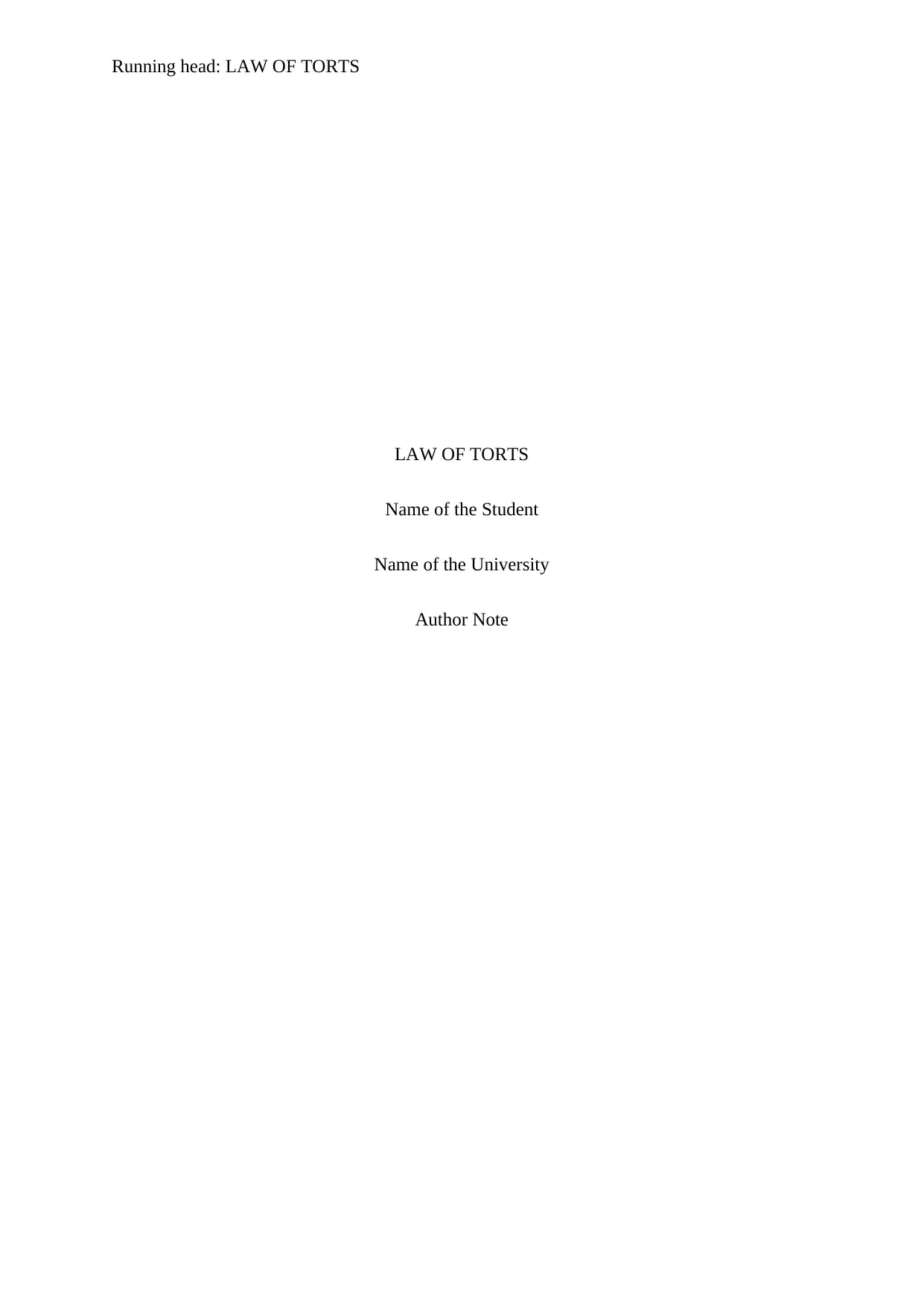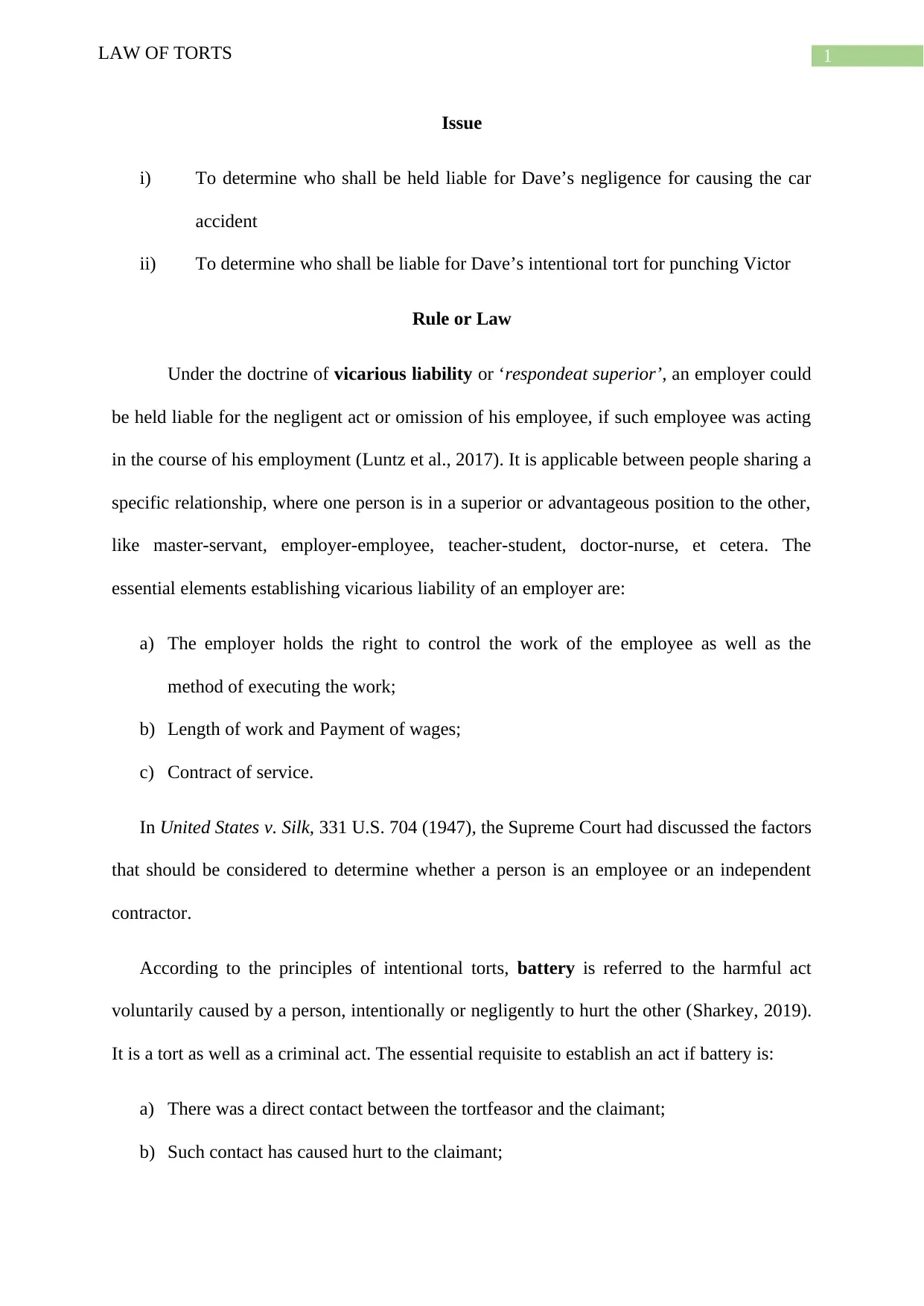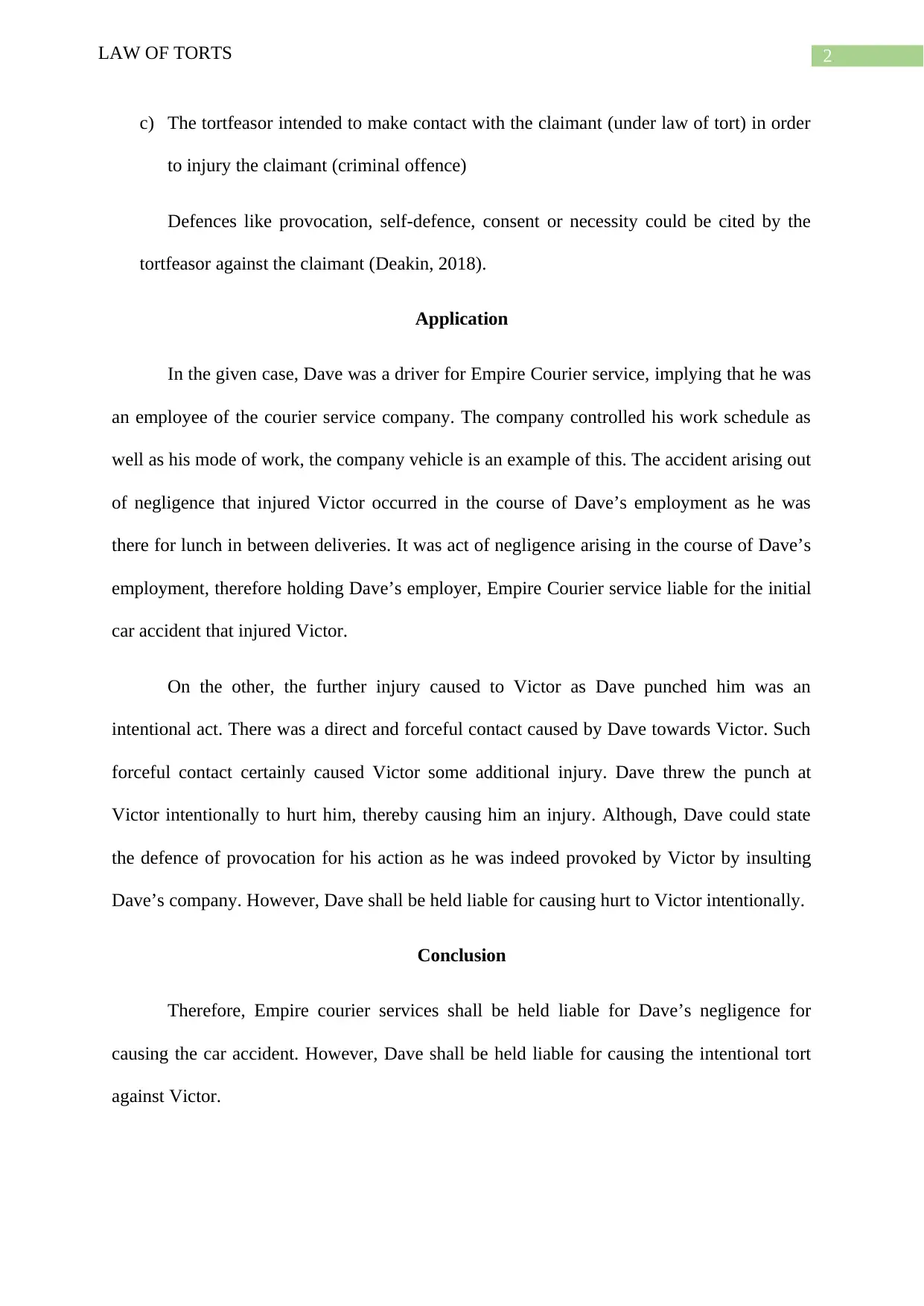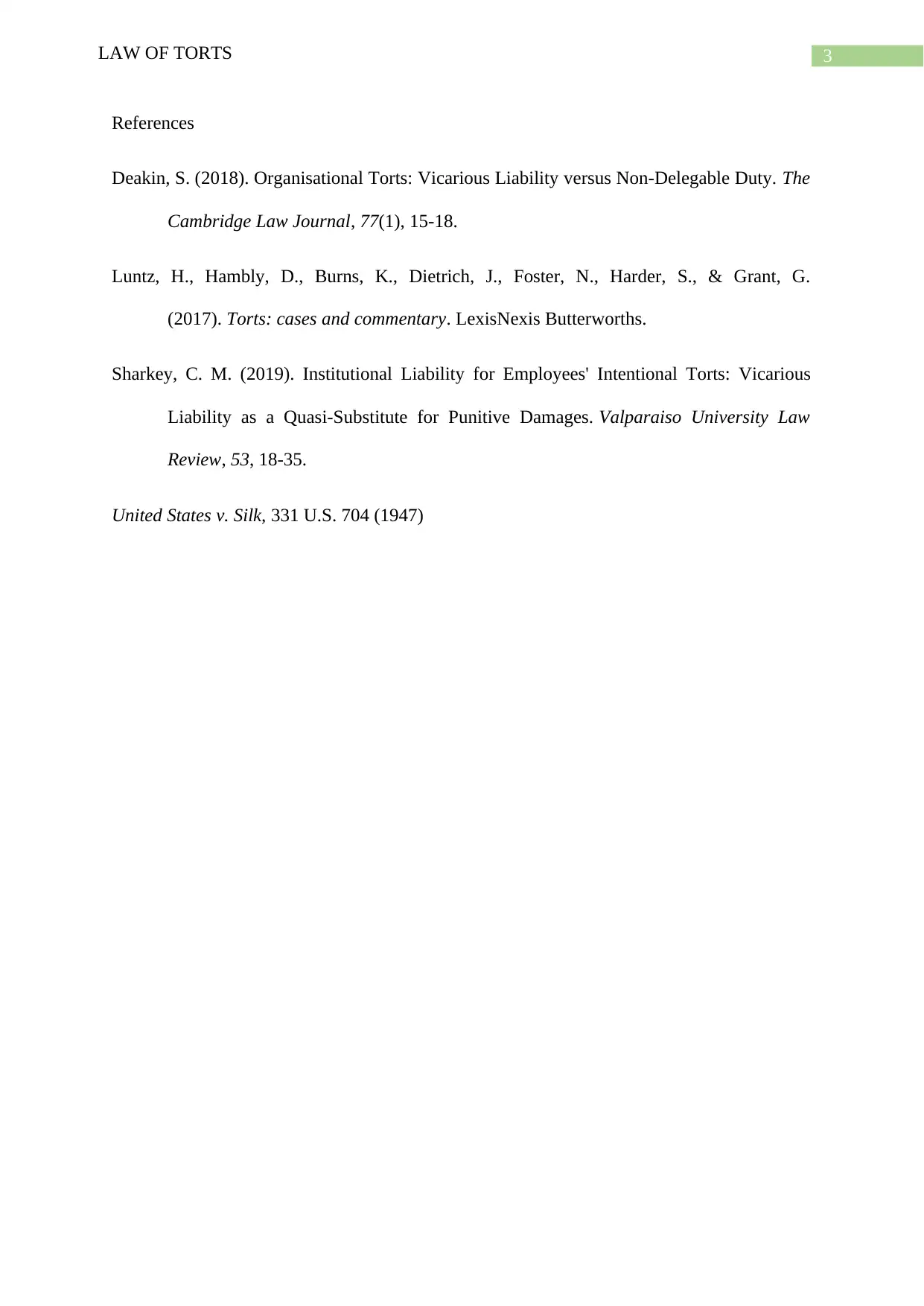Case Study: Vicarious Liability and Intentional Torts in Law of Torts
VerifiedAdded on 2022/09/16
|4
|717
|71
Case Study
AI Summary
This case study analyzes a Law of Torts scenario involving Empire Courier Service and its employee, Dave. The assignment focuses on determining liability for Dave's actions, including a car accident caused by his negligence and an intentional tort of battery against Victor. The analysis applies the doctrine of vicarious liability, considering whether Dave was acting within the scope of his employment when the accident occurred. It also examines the elements of battery and potential defenses such as provocation. The solution concludes that Empire Courier is liable for Dave's negligence due to vicarious liability, while Dave is held liable for the intentional tort of battery. The document references relevant legal principles and supporting case law, providing a comprehensive understanding of the legal concepts involved.
1 out of 4











![[object Object]](/_next/static/media/star-bottom.7253800d.svg)